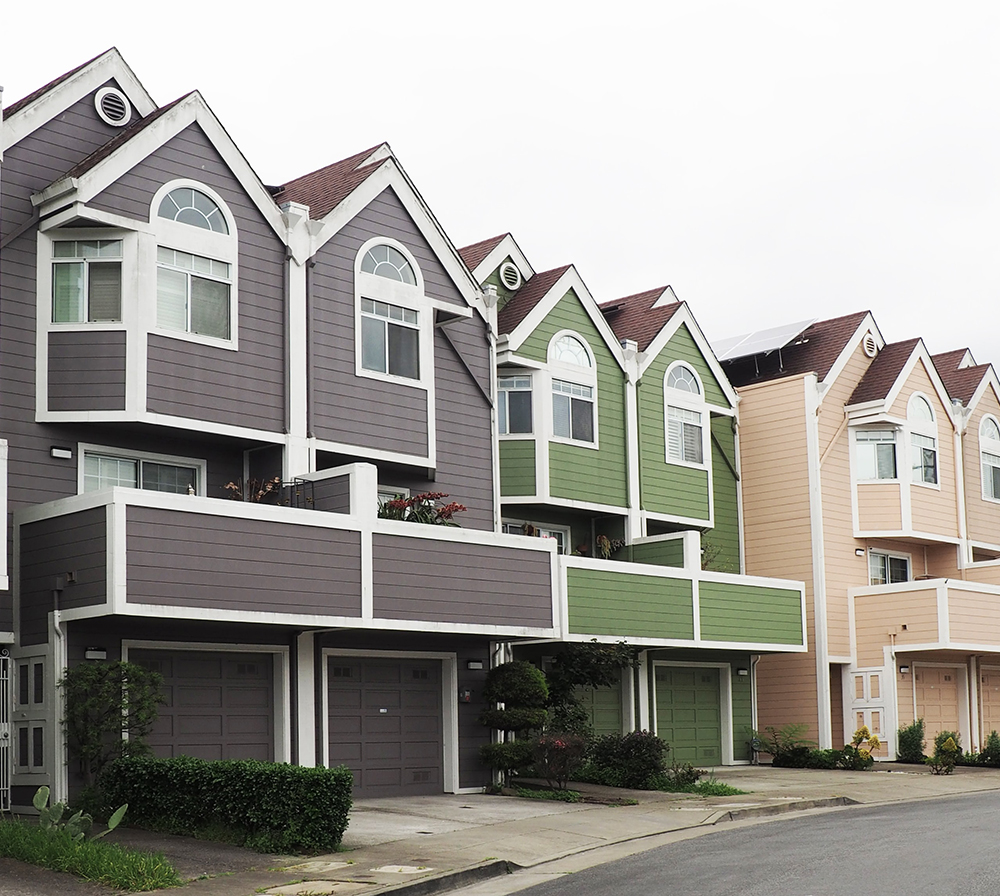SB 9 essentially eliminated single-family-only zoning by allowing property owners – on a “by right” basis that avoids subjective local reviews – to subdivide their single-family properties and build additional units on the land provided it meets all the pre-existing local setback and land-use conditions. It would allow up to four units on a single-family parcel.
SB 10 is a bit more complex, but it allows cities to approve smaller condominiums and apartment projects (up to 10 units) on urban in-fill sites and along transit corridors – without having to go through the long process of gaining a California Environmental Quality Act (CEQA) approval. Despite the complaints of critics, it does not allow developers to build high rises in suburban neighborhoods.
The laws – along with other deregulation bills that eliminate government-imposed parking minimums – have flipped traditional political alliances. Progressives generally embrace these proposals, while conservatives have led the charge against them. There are exceptions, as some no-growth lefties have opposed the laws and some free-market conservatives have supported them.
Nevertheless, the debate has led to an unusual political dynamic. Democrats haven’t suddenly seen the light about markets and deregulation, of course, but they support SB 9 and 10 in particular because they advance their end goals of promoting higher housing densities. Republicans lawmakers mostly represent suburban and rural districts, so they often see the laws as an effort to turn their quiet towns into something resembling San Francisco.
The fights have gotten rather vicious. In Huntington Beach, Mayor Tony Strickland, a former California state legislator, has led his city’s efforts to challenge a variety of state housing laws as the city reportedly won’t approve any SB 9 or SB 10 permits. (Strickland has done so even as he lives in an affordable-housing condominium). In its lawsuit, the city has made a “local control” argument that sounds a lot like raw NIMBYism (Not In My Back Yard).
“This rapid, reckless, state-mandated re-development scheme threatens the health, safety and welfare of the city; it overburdens existing city infrastructure, damages environmentally sensitive areas of the city, and devalues affected private properties,” according to the city’s lawsuit. Gov. Gavin Newsom fired back in a similarly testy manner, vowing to hold Huntington Beach to account for its flagrant violation of the state’s housing laws.
As it turns out, the heated debate might be much ado about very little. As the Mercury News reported in February, people “from both sides of the aisle may have led to an overestimation of its potential impacts.” The article referred to a January study from the Terner Center for Housing Innovation at UC Berkeley examining the still-early effects of SB 9. SB 10 wasn’t examined by the study.
“Homeowners face multiple barriers to using SB 9 to split their lot and create new homes, including high construction costs and/or lack of expertise with homebuilding,” according to the study. “We also found that local governments have created restrictions that limit the potential of SB 9. Our June 2022 analysis of a sample of ordinances from around the state found that some local regulations – such as low maximum unit size, height limitations, and other design rules – may render the construction of SB 9 homes infeasible.”
Not surprisingly, property owners face quite a few economic and local-regulatory barriers to build additional units on their properties. Not many California homes in urban settings have particularly large lots. It’s extremely costly to build new projects and the vast majority of homeowners have no intention of undertaking such a major project. Unfortunately, some cities have thrown up cynical roadblocks – but this is a tough lift for most people even when cities are supportive.
As a result, the study found that “SB 9 activity is limited or non-existent” in 13 examined cities. Massive Los Angeles, with its 3.8-million population, had only 211 SB 9-related permit applications. Property owners filed only seven such applications in 2022 in San Diego, which has a nearly 1.4-million population. SB 9 is modeled after relatively successful “granny flat” laws that loosen up rules for turning, say, an above-garage space into a rental unit. But the study found that SB 9 isn’t as flexible as those ADU (Accessory Dwelling Unit) laws.
Whatever the reason for the slow progress, SB 9 is not transforming our neighborhoods. It has not created the abundance of housing that supporters predicted and likewise hasn’t created the devastation its opponents feared. That doesn’t mean it was wrong to pass SB 9, SB 10 and other measures that address the state’s housing crisis by increasing housing supply. It just means everyone needs to calm down and be realistic about the likely results.
I support the law because it is good public policy. It promotes freedom, limits bureaucratic subjectivity and bolsters property rights. It promotes family values by enabling homeowners to build a place for elderly parents or adult children. It limits the effects of CEQA and reduces bureaucratic subjectivity. It also reinforces the idea that the state can indeed pass market-based policies.
But the Terner Center study reminds us that there is no single, simple easy button remedy to the housing crisis and that these new laws are not destroying the fabric of anyone’s neighborhood.
Steven Greenhut is director of the Pacific Research Institute’s Free Cities Center.

